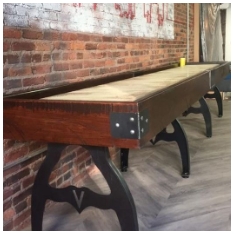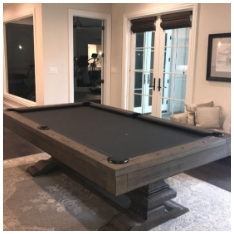When selecting a pool table, understanding the materials used in its construction is crucial. These materials not only determine the table’s longevity but also affect its playability, performance, and overall aesthetic. Whether you're an amateur or a seasoned player, investing in a high-quality pool table that fits your needs is essential. This article provides a comprehensive guide on the materials commonly used in billiards tables, helping you make an informed decision.

The Importance of Choosing the Right Pool Table Materials
Billiards tables come in various designs and are made from a wide range of materials. The choice of materials can influence the table's price, durability, and how the game feels. Knowing what to look for ensures that your investment will meet your expectations for both home use and professional play.
One of the primary factors to consider is how often the table will be used and who will be using it. Is the table intended for casual home play, or do you need something robust for competitive games? Each of these considerations will affect your choice of materials.
Frame and Cabinet: The Backbone of Your Pool Table
The frame, also referred to as the cabinet, is the core structure that supports the entire pool table. A strong and sturdy frame is essential for ensuring the table's stability and longevity.
Hardwood vs. Engineered Wood
- HardwoodMany high-quality pool tables feature frames made from solid hardwoods like oak, maple, or mahogany. Hardwood frames are renowned for their durability and resistance to warping. Tables made from hardwood offer a classic, timeless aesthetic and can last for decades if properly maintained. However, they are also more expensive due to the cost of the wood and the craftsmanship involved.
- Engineered WoodEngineered wood, such as MDF (Medium-Density Fiberboard), is a more affordable alternative to hardwood. While it may not have the same longevity as solid wood, MDF is still a strong and stable option. However, MDF can be more prone to warping over time, especially in humid environments. If you're looking for a more budget-friendly option for casual use, engineered wood can suffice.
Slate vs. Non-Slate Playing Surface: The Key to Performance
One of the most important components of a pool table is the playing surface. This is where the balls move, and it needs to be smooth and even for accurate play. The materials used for the playing surface significantly impact the table’s performance.
Slate: The Gold Standard
- Why Choose Slate?Slate is a type of metamorphic rock that is both strong and smooth. It is widely considered the best material for pool table surfaces due to its durability and ability to remain perfectly flat over time. Professional-grade pool tables typically feature a slate playing surface, offering an unrivaled experience in terms of accuracy and consistency.
- Multi-Piece Slate vs. Single-Piece SlatePool tables with slate surfaces generally come in either three-piece or one-piece configurations. Multi-piece slate tables are often preferred for professional play, as the pieces can be precisely leveled to ensure a perfectly flat surface. Single-piece slate, on the other hand, is easier to install but may not provide the same level of accuracy.
Non-Slate Options: Wood, MDF, and Other Alternatives
While slate is the preferred material for serious players, non-slate options such as wood or MDF are more commonly found in budget-friendly or recreational tables.
- Wood or MDF SurfacesNon-slate surfaces like MDF or wood are cheaper alternatives. These materials may be sufficient for casual home use, but they do not provide the same level of performance as slate. MDF and wood are also more susceptible to warping over time, which can lead to uneven surfaces and inconsistent ball movement.
The Rails: Billiards Table Cushions and Their Importance
The rails or cushions of a pool table play a critical role in how the balls bounce off the edges during gameplay. Understanding the materials used in the rails can help you choose a table that delivers consistent and enjoyable play.
Natural Rubber vs. Synthetic Rubber Cushions
- Natural RubberHigh-end pool tables often use natural rubber cushions. This material provides a consistent and lively bounce, making it the preferred choice for professional players. Natural rubber cushions tend to last longer and maintain their elasticity over time, ensuring that your table performs optimally for years.
- Synthetic RubberSynthetic rubber cushions are a more affordable option, often found in lower-priced or recreational tables. While they may not offer the same longevity or consistency as natural rubber, synthetic cushions can still provide an adequate bounce for casual play.
Conclusion:
When it comes to purchasing a pool table, understanding the materials used in its construction is key to making a well-informed decision. From the slate playing surface to the felt and cushions, each material affects the table's performance, longevity, and price. By carefully considering the materials that best suit your needs and budget, you can find a pool table that will provide years of enjoyment and enhance your game room.





